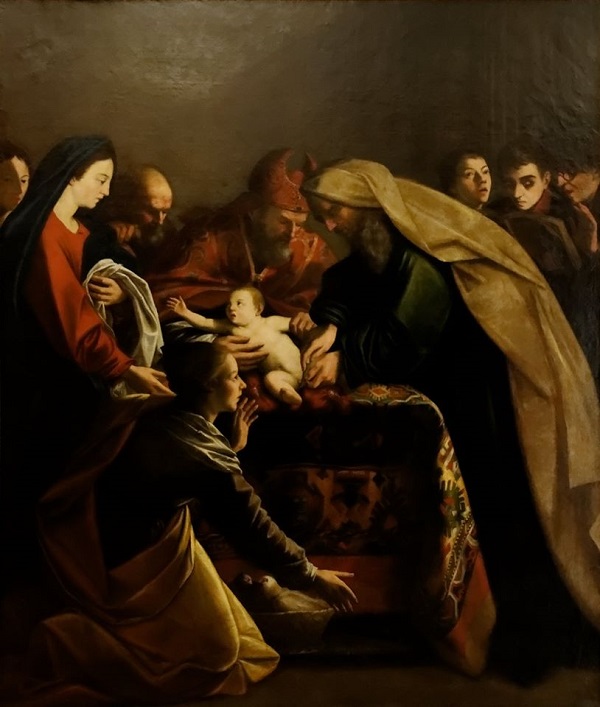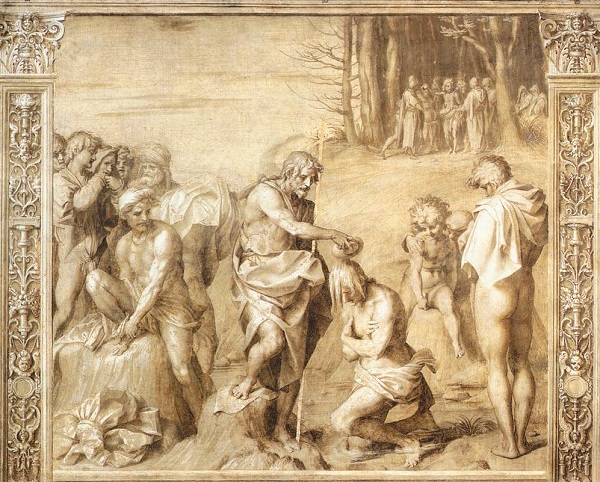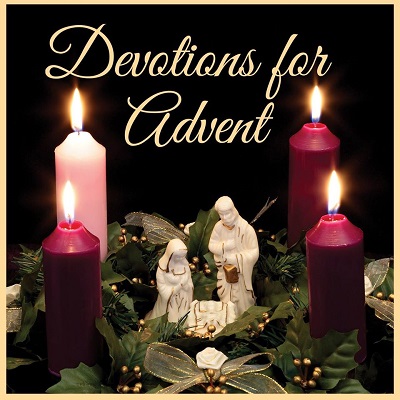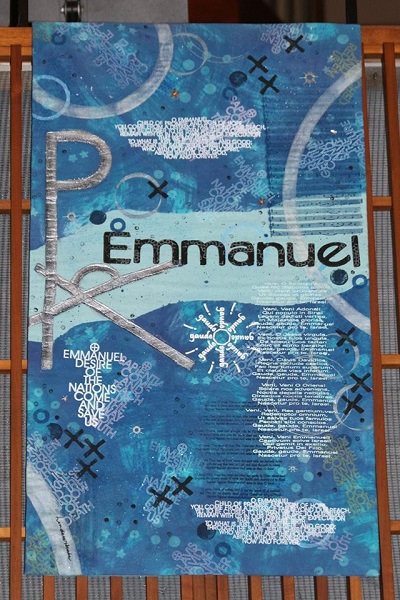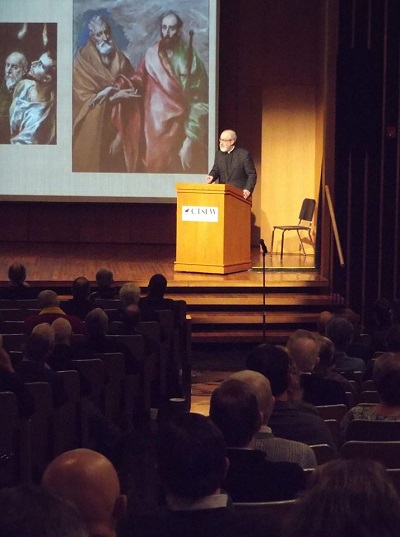 Dr. Arthur Just Jr., CTSFW Professor of Exegetical Theology
Dr. Arthur Just Jr., CTSFW Professor of Exegetical Theology
The biblical story is a story of blood and sacrifice in the presence of God. To enter into the presence of God, one needs to pass through blood. The theology of divine presence is central to the Old Testament and continues into the New in the birth of Jesus Christ. Luke begins by moving from the temple to the baby in the womb of the Virgin Mary. There is a shift from God’s holy of holies in the temple to the flesh of Jesus, who is both God and man.
The story of everything is driven by atonement, by blood and sacrifice, and finally by Eucharist, which is where we join Christ in the blood and sacrifice.
Only Luke and Paul have the words of substitutionary atonement over the bread. “Given on behalf of you.” The language is reminiscent of the sacrificial system of the Old Testament, particularly Leviticus and Isaiah 53. Only in Luke do you also find this substitutionary language in the giving of the blood. As Luke T. Johnson, a historian of early Christianity, once wrote: “For you: the sacrifice is vicarious. The phrase “hyper hymon” ([Greek] ‘for you’) is found in verse 19 [Luke 22:19] and is repeated here; it means both ‘in place of you’ and even more ‘in your behalf.’”
Luke references the death of Jesus in his institution narrative in Luke 22. “Then came the day of Unleavened Bread, on which the Passover lamb had to be sacrificed” (Luke 22:7). The narrative concerns two distinct and parallel events: the celebration of the Passover according to the old covenant, and an institution of a new covenant. The hearer must keep both of these in mind as the narrative progresses. The Passover lamb must be slain, the Passover feast must be prepared and eaten. But THIS feast will be unlike any other. It makes obsolete the sacrifice of the Old Testament.
The disciples prepared for this meal, with the expectations of celebrating another Jewish Passover. But what these disciples experienced was not another old covenant Passover but one given new meaning in terms of Christ Himself, making it His meal, on the night when He was betrayed. A meal that supersedes all other meals. This is Jesus’ Passover because on this night the Lamb who must be sacrificed stands on the threshold of the new era of salvation. After this Passover, there will be no more need for the Jewish Passover (1 Corinthians 5:7: “Cleanse out the old leaven that you may be a new lump, as you really are unleavened. For Christ, our Passover lamb, has been sacrificed”).
The world has passed over from death to life. His life is offered continually. This is the Passover for which all the other Passovers were preparation. Worthy is the Lamb who was slain, as it says in Revelation 5.
Jesus’ impending death is referenced in Luke 22:15 “before I suffer” and verse 37: “For I tell you that this Scripture must be fulfilled in me: ‘And he was numbered [also translated “reckoned” as referenced in an earlier symposia lecture] with the transgressors.’ For what is written about me has its fulfillment.”
In Luke is also the pastoral character of the distinctively added, “for you” and poured out “for you” in the institution narrative. Where Matthew and Mark accent the universal atonement (as ransom for many), Luke makes it personal: for you. For the disciples. It transforms it into a liturgical statement that brings the universal atonements into the mouths of the disciples and us. The worshipper knows himself personally to be addressed by the Lord.
Is this not the Lutheran way? Do we not say, “The body of Christ given for you. The blood of Christ shed for you.” For me [Dr. Just said], this is one of the most pastoral moments in the ministry. When I am placing the body and blood of Christ in the mouths of the saints, and they are in that moment participating in the atonement of Christ. Luke has taken the historical event of atonement and placed that atonement in the mouths of his communicants.
Following the institution in Luke, an argument breaks out among the disciples about who’s the greatest and Jesus responds with the message that they are humble servants as He Himself is. “But I am among you [in certain translations “I am in the midst of you”] as the one who serves” (Luke 22:27). The one who gives His body and blood, for you—He reiterates that—will always be in their midst. The real presence of Jesus. Jesus will continue to be in the presence of his church in Communion as they dine. Goes from the universal to the particular, form the many to one, that what happened on Good Friday happens for every believer.
In Luke, Jesus called the cup “the new testament in my blood,” reflecting the language in the Passover account in Exodus 24, “the blood of the covenant.” They are brought into the cup and receive all its benefits made possible by the sacrifice of Jesus. Since God incarnate is the host and he gives His body and blood with the bread and wine, Luke stresses the new testament, which is unique to Luke. He alludes to the promise of a new covenant, which Jesus fulfills in the shedding of his blood. These are callbacks to the prophetic passages like Jeremiah 31:34: “And no longer shall each one teach his neighbor and each his brother, saying, ‘Know the Lord,’ for they shall all know me, from the least of them to the greatest, declares the Lord. For I will forgive their iniquity, and I will remember their sin no more.”
The accent of the Luke 22 institution narrative falls on the blood of Jesus. Being poured out suggests both the pouring of the cup and the blood that pours from the body of Jesus on the cross. Jesus fulfills all the many bloody sacrifices of the Old Testament, including the poured out in Exodus 24 and referenced in Isaiah 52:15: “until the Spirit is poured upon us from on high, and the wilderness becomes a fruitful field, and the fruitful field is deemed a forest.”
The drinking of blood would have been an extreme offense to the Jews; and now, to refuse to recognize Christ’s body and blood in the Supper, is to court condemnation as Paul warns. As the Church now shares in the body and blood, it is bound together in the new creation in the body of Christ.
In conclusion, the evangelist Luke shows how Jesus, on the night in which He was betrayed, looks forward to His atonement for the sins on the cross in our behalf. And already here in this meal He gives His body for you, and pours out His blood for you. Luke’s atonement theology affirms that at our altars we receive the sacrifice Christ offered once for all on the altar of the cross, so that the body and blood of Christ Jesus as offered on the cross for the atonement of the sins of the whole world will nourish and strengthen us until at least we gather at the heavenly banquet to feast with the Lamb and all His saints.
~~~~
This concludes the lectures for today. A short vespers service (which is not being livestreamed) is taking place right now, and the other excitement for the evening is our second annual King’s Men Alumni Game: current King’s Men versus King’s Men Alumni. All are invited to Wambsgans Gymnasium at 7:00 p.m.
Please note to our livestream watchers that the short exegetical papers being presented tomorrow will not be streamed. Logistically there’s just too many of them, spread across too many classrooms. However, you can view the titles of all 10 papers and their presenters by clicking on the brochure at www.ctsfw.edu/symposia. I would recommend contacting the speakers directly (most are pastors, so you should be able to find their emails through the LCMS locator) if you are interested in reading their paper. We will not be providing summaries for those.
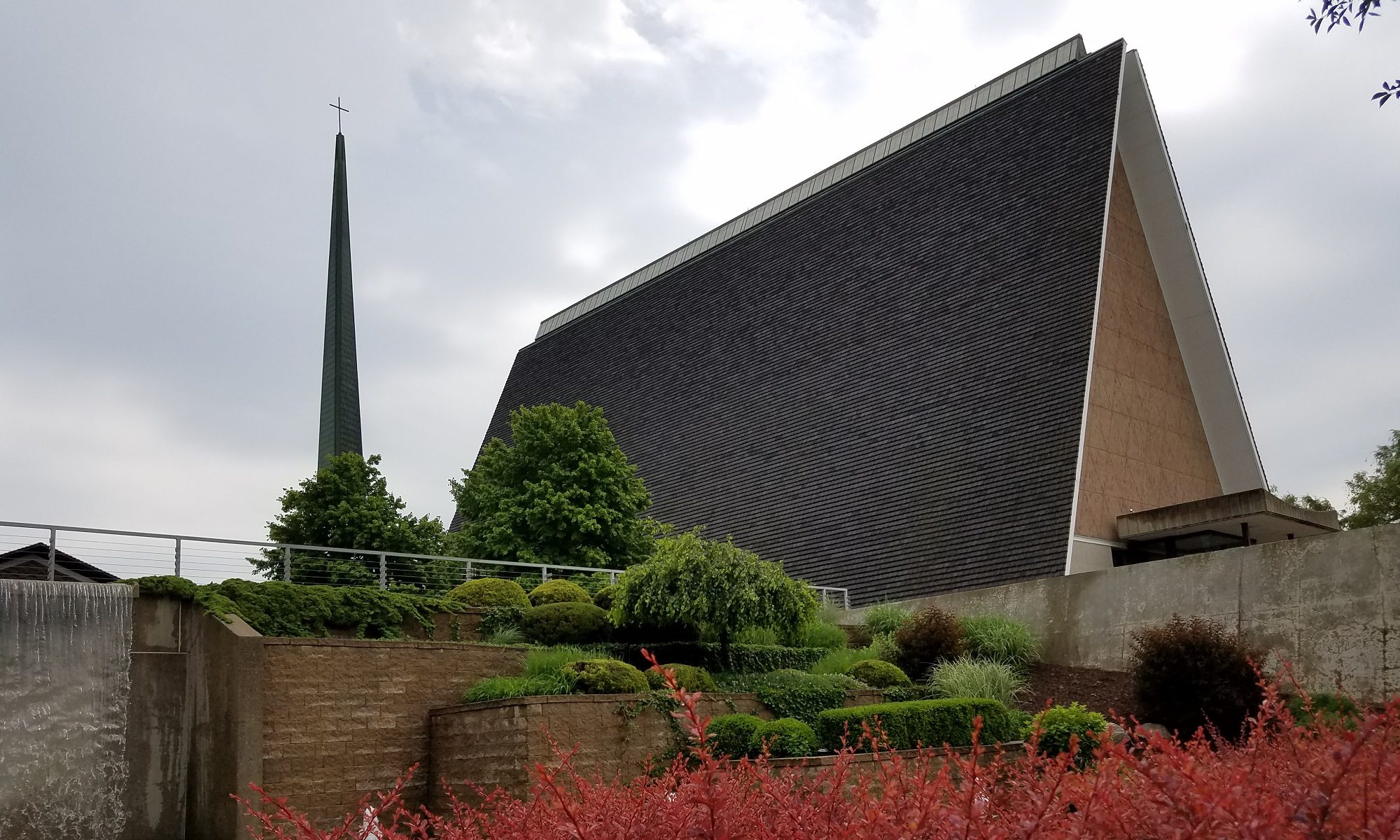
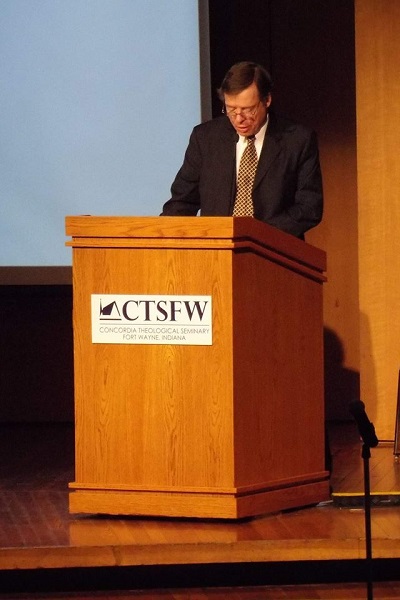 The phrase “penal substitutionary atonement” captures the essence of what I was taught when I was young: that Jesus not only led the perfect life, He also took upon Himself the sins of the world and paid fully for those trespasses with His suffering and death on a cross. In other words, Jesus took o
The phrase “penal substitutionary atonement” captures the essence of what I was taught when I was young: that Jesus not only led the perfect life, He also took upon Himself the sins of the world and paid fully for those trespasses with His suffering and death on a cross. In other words, Jesus took o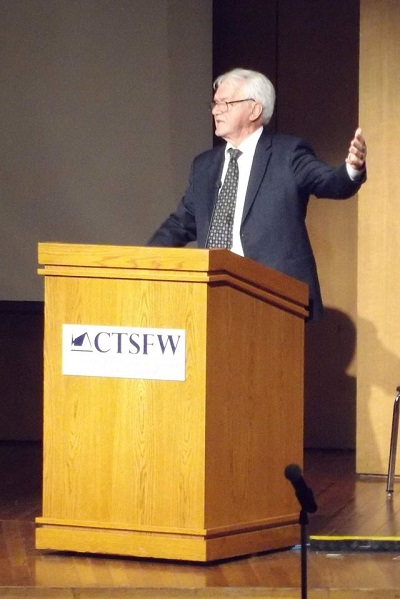 Dr. John Kleinig, Professor Emeritus at Luther College Adelaide, South Australia
Dr. John Kleinig, Professor Emeritus at Luther College Adelaide, South Australia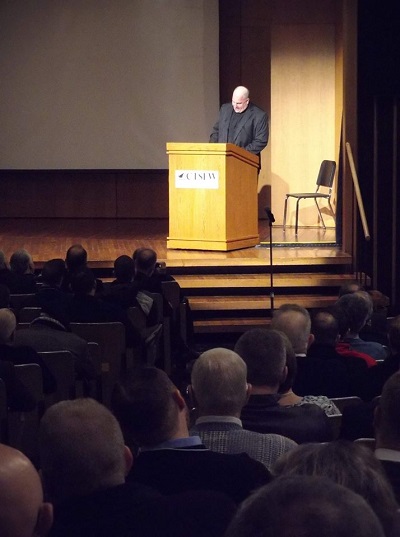
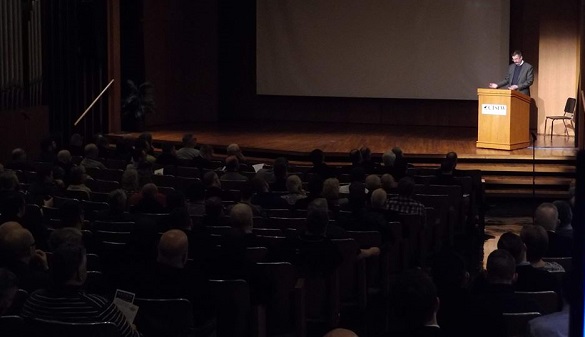
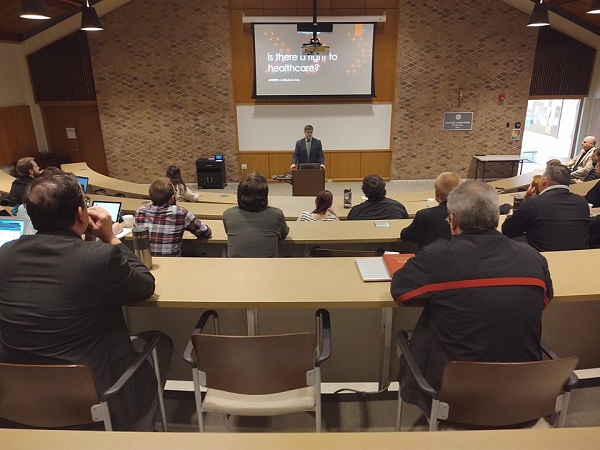
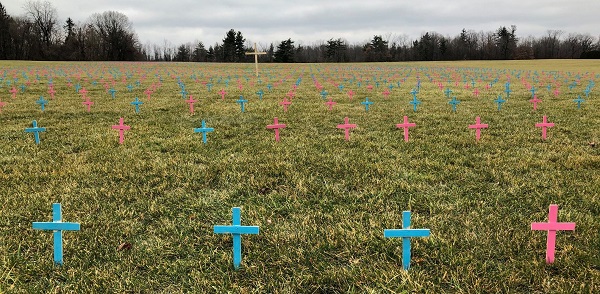
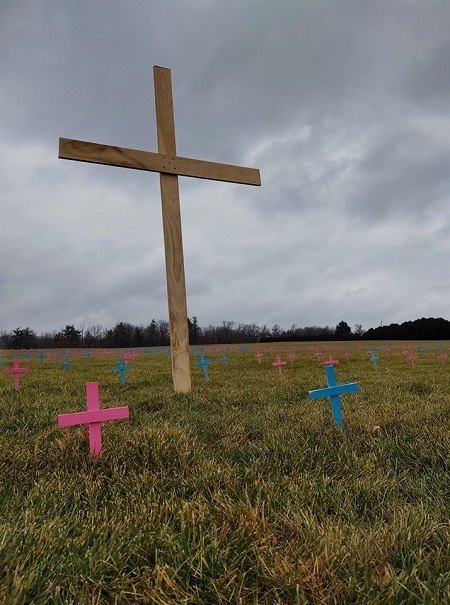 But here, as always, the memorial is centered around the cross. Even here Christ is at the center. We are so valued by God that He sent His only Son to die for our sake. No matter our societal worth, our stage of development, nor even the depth of our sins. We should have been found wanting, and yet we were wanted. And so, on a Good Friday nearly 2,000 years ago, justice and mercy met. There is hope for the lost, the hopeless, the grieving, the guilty. We were bought with a price. We have been redeemed.
But here, as always, the memorial is centered around the cross. Even here Christ is at the center. We are so valued by God that He sent His only Son to die for our sake. No matter our societal worth, our stage of development, nor even the depth of our sins. We should have been found wanting, and yet we were wanted. And so, on a Good Friday nearly 2,000 years ago, justice and mercy met. There is hope for the lost, the hopeless, the grieving, the guilty. We were bought with a price. We have been redeemed.